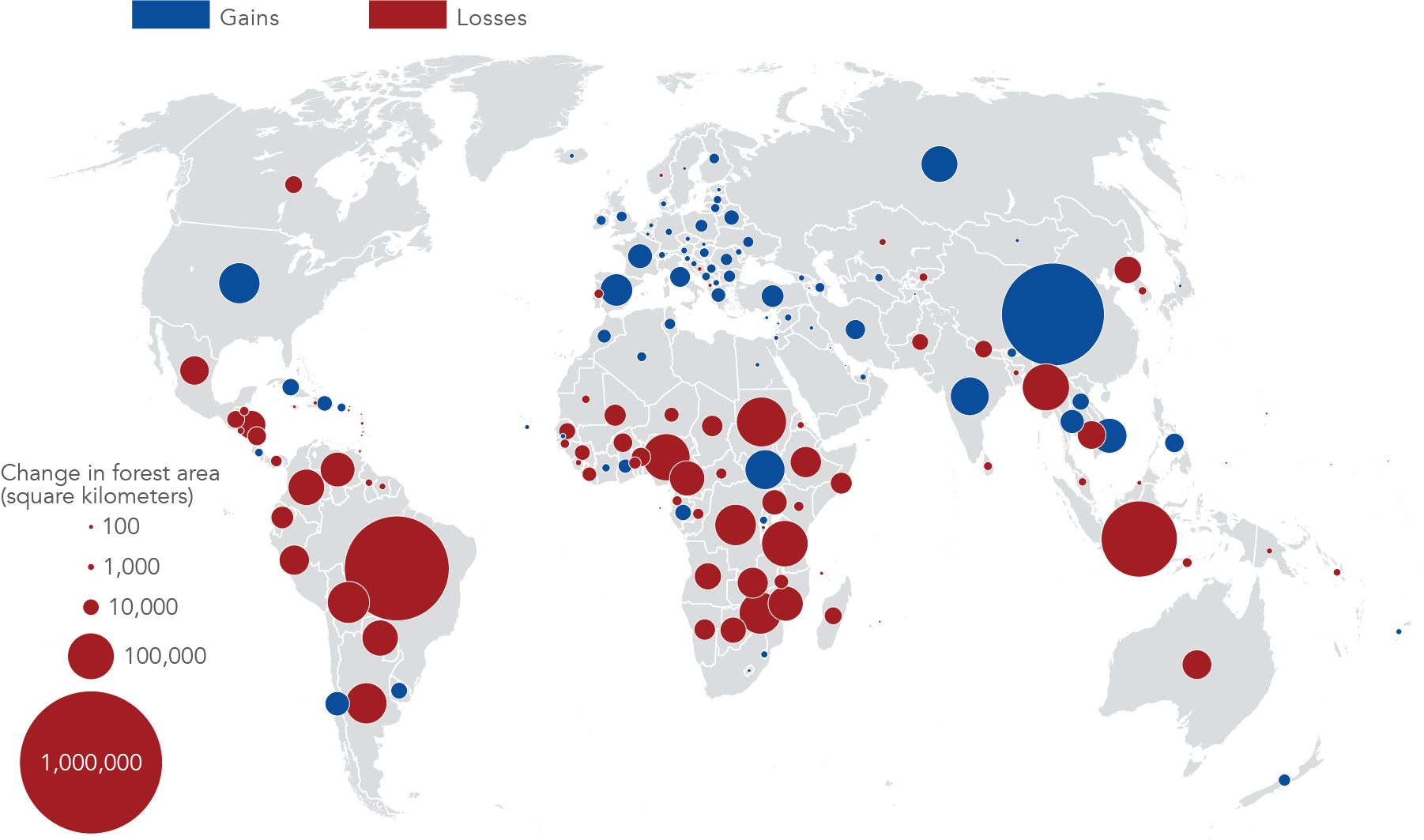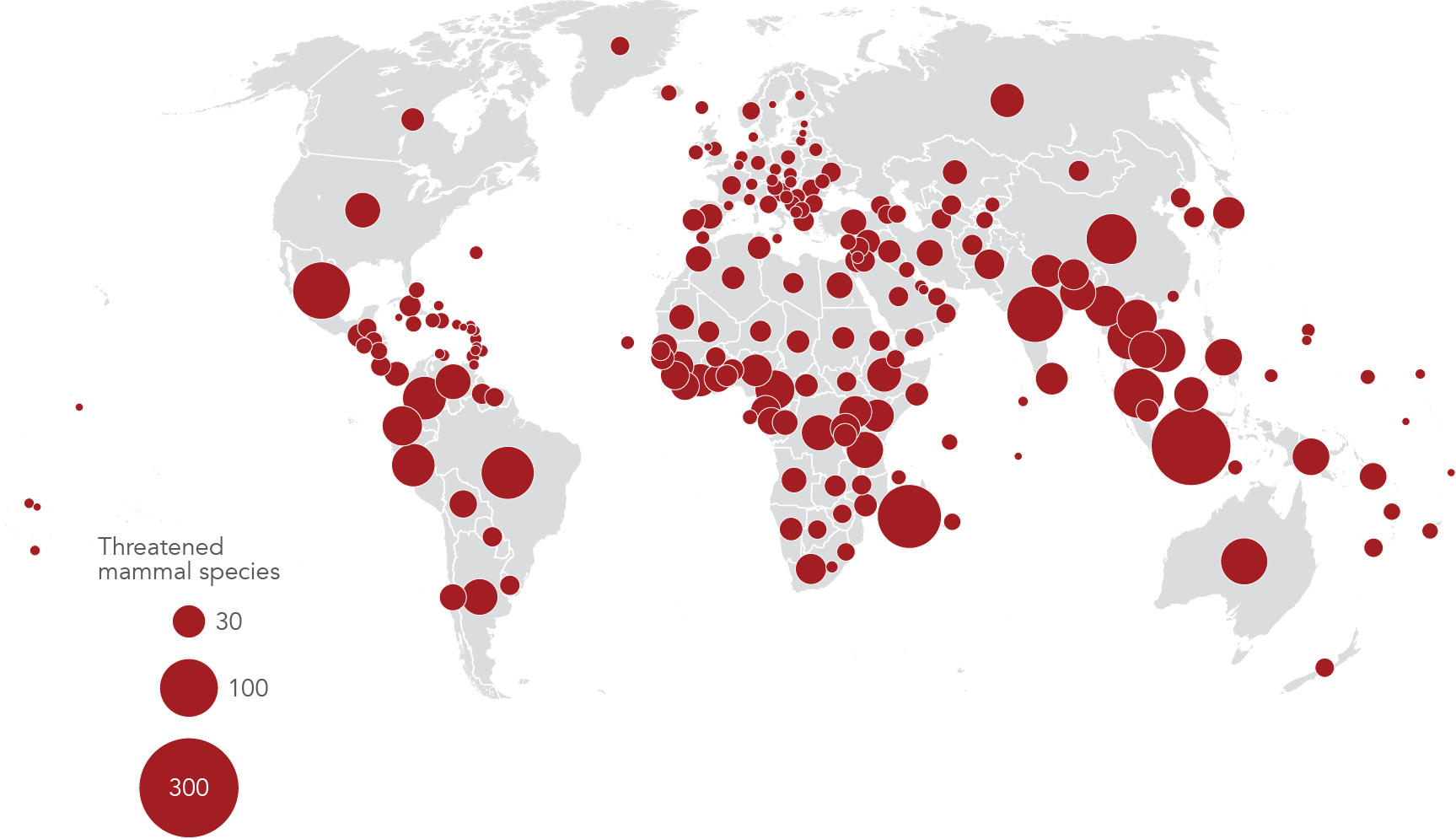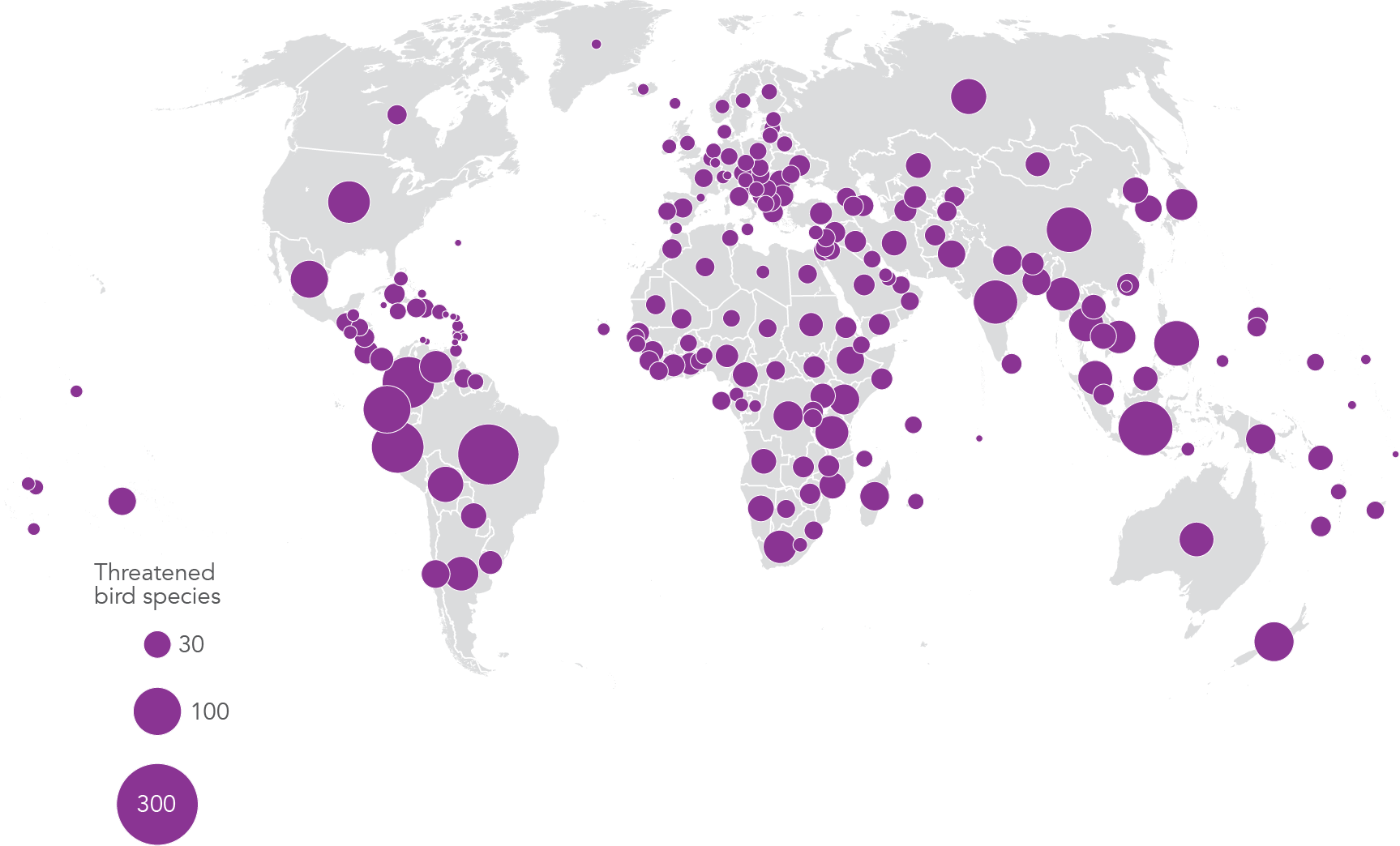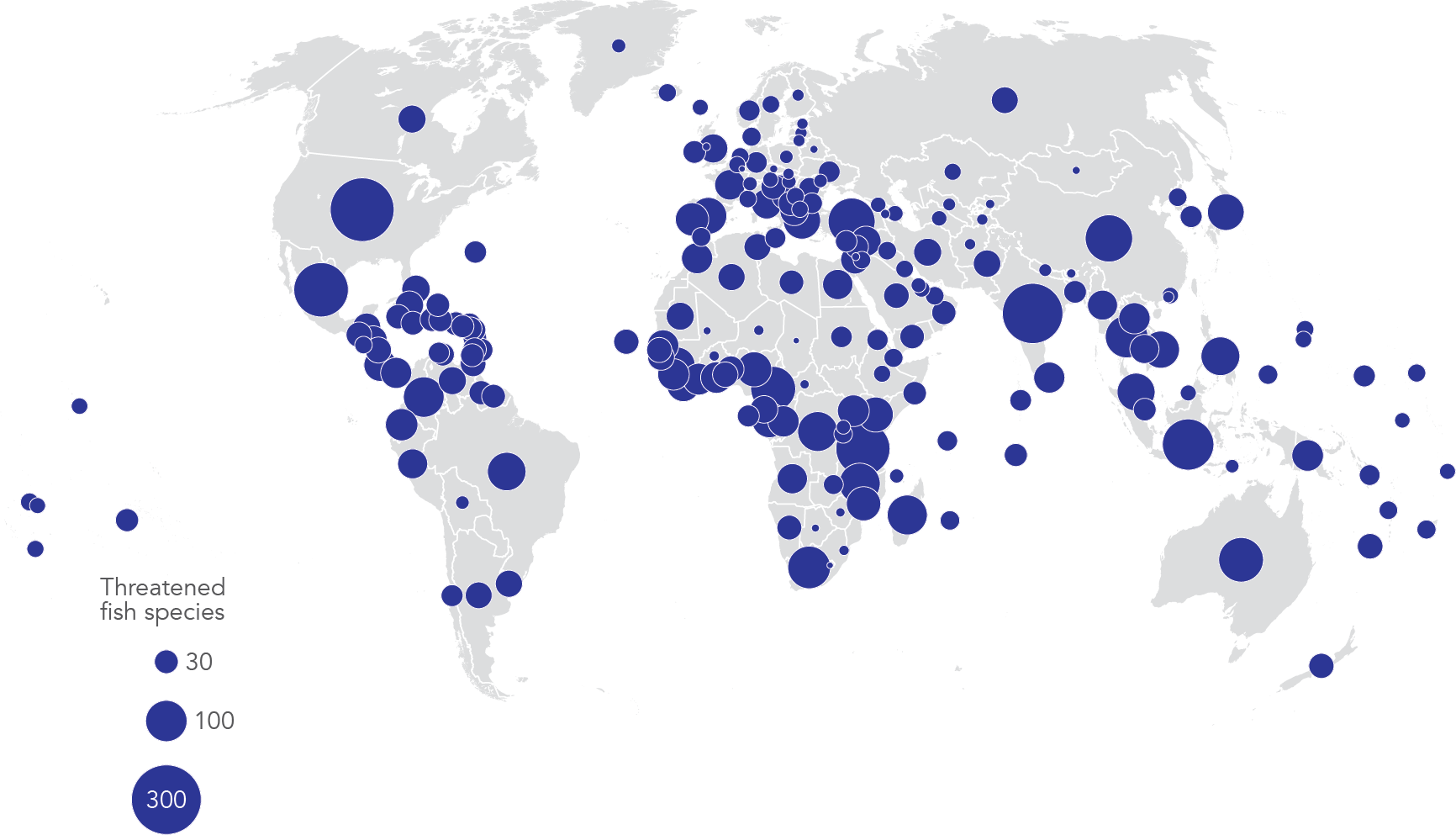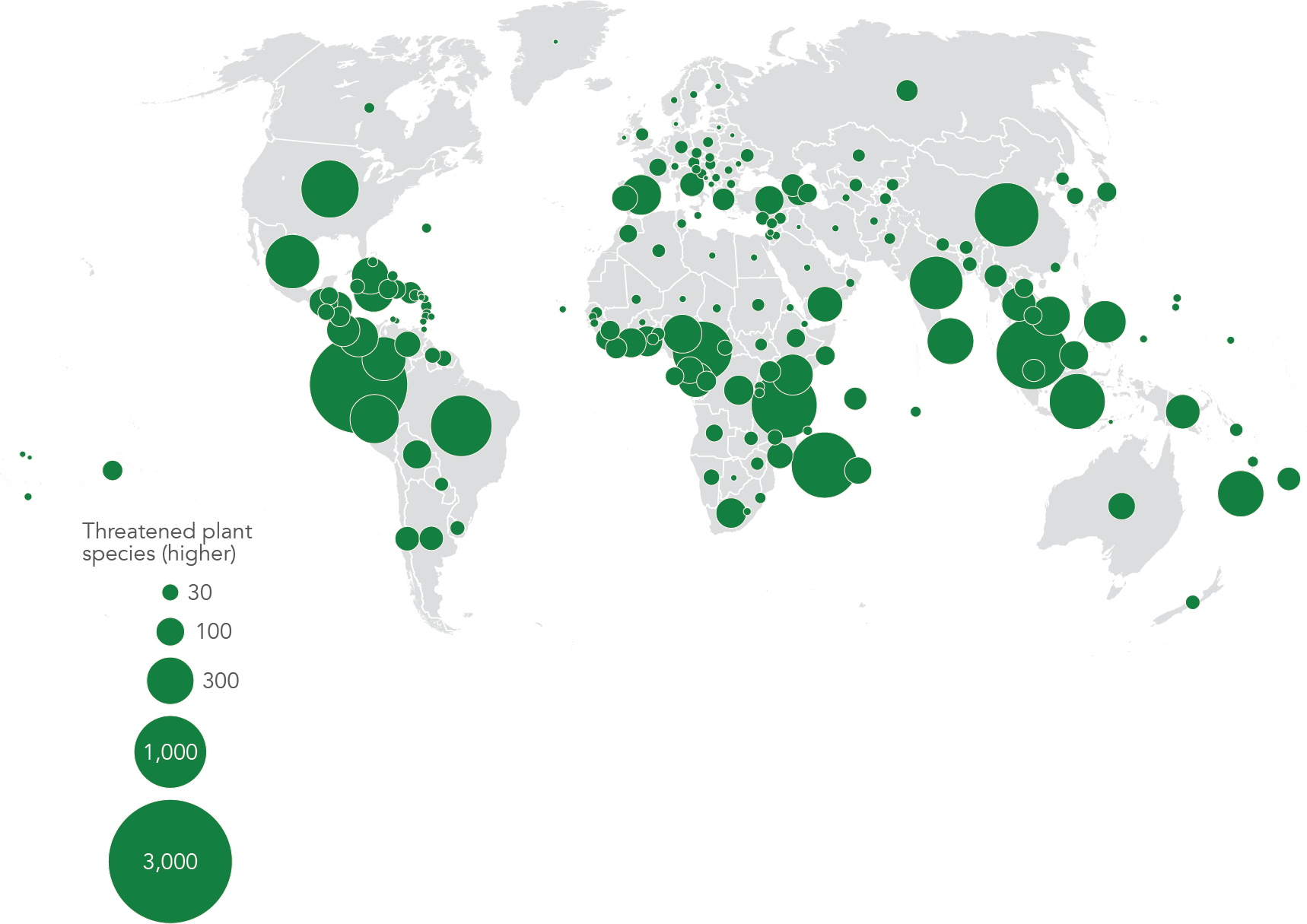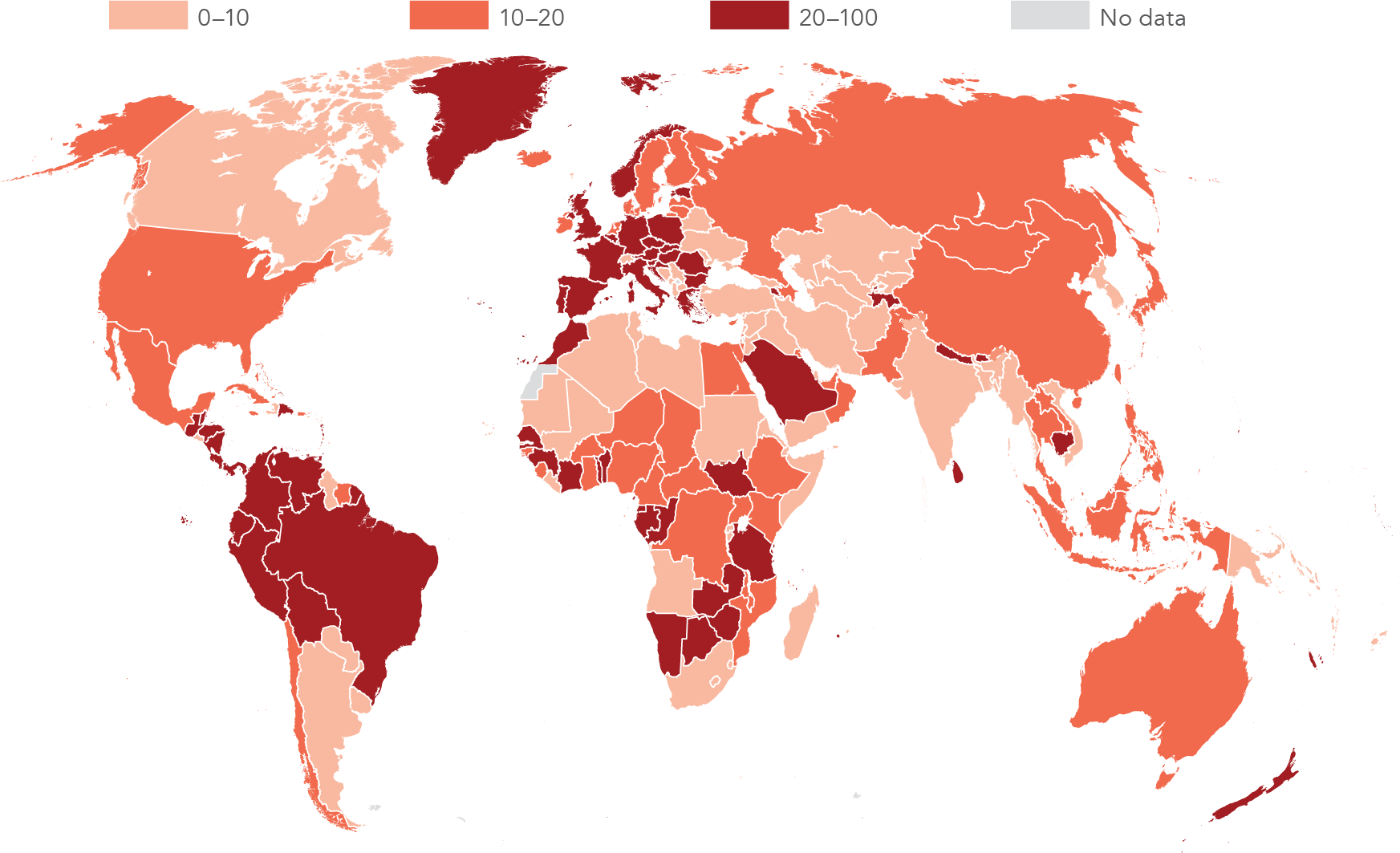Halting forest loss
Forests cover about one-third of all land worldwide and nearly half of this is within Europe and Central Asia and Latin America and the Caribbean. Crucial to the health of the planet and its diverse species and to the livelihoods of one-fifth of the human population, forests contribute to long-term economic growth, social inclusion, and environmental stability. Goal 15 encourages an increase in both afforestation and reforestation worldwide (target 15.2).
The growing demand for forest products and for agricultural land has contributed to an average annual loss of global forest area of more than 50,000 square kilometers over the last 25 years. This depletion is concentrated in low- and lower-middle-income countries where more than 1.2 million square kilometers of forest disappeared between 1990 and 2015. The biggest losses were in Latin America and the Caribbean, where more than 9 percent of their forest disappeared, and in Sub-Saharan Africa, which had a loss of 12 percent (see figure 15a). High-income economies gained about 191,000 square kilometers of forest land during the last quarter of the century.
Protecting habitats and preserving diversity
Climate change, poaching, overfishing, and pollution come together with the degradation of forests, landscapes, and ecosystems to make the habitat that harbors biodiversity much more vulnerable. Goal 15 seeks to reverse these trends and dampen the threat of extinction to many plant and animal species (target 15.5), especially in Latin America and the Caribbean, Sub-Saharan Africa, and East Asia and Pacific. The number of threatened plants is highest in Ecuador, the number of threatened fish in the United States, the number of threatened mammals in Indonesia, and the number of threatened birds in Brazil (figures 15b–f).
Protecting land
Worldwide, nearly 15 percent of all terrestrial land is now protected, over 80 percent more than in 1990. Many countries in Latin America protect at least 20 percent of their land, while South Asia lags behind other regions with an average of just under 7 percent (figure 15g).
Restoring forests and degraded landscapes
Restored landscapes support sustainable development in many ways: they benefit livelihoods and biodiversity by reducing erosion, supplying clean water, and providing wildlife habitat, biofuel, and other forest products (targets 15.1 and 15.3). Forests and trees also help mitigate climate change, enhance soil fertility, conserve soil moisture, and boost food production (target 15.3). A restored landscape may accommodate a range of land uses such as agriculture, protected reserves, ecological corridors, regenerated forests, well-managed plantations, agroforestry systems, and riparian plantings to protect waterways.
Worldwide, nearly 25 million square kilometers offer opportunities for restoration, many in tropical and temperate areas. Nearly 18 million square kilometers would ideally combine forests and trees with other land uses through "mosaic restoration," including smallholder agriculture, agroforestry, and settlements. A further 5 million square kilometers would be suitable for wide-scale restoration of closed forests. Africa provides the largest restoration opportunity, followed by Latin America (figure 15h).
Providing pathways out of poverty
Some 300 to 350 million people, about half of them indigenous, live within or close to dense forests and depend almost entirely on forests for subsistence.1 And many more in urban areas depend on forest resources for food, energy sources, and construction materials.
Beyond subsistence, forests and landscapes are an important aspect of rural livelihoods. Rural households living near forested areas in Africa and Asia derive over 20 percent of their income from forest sources, and those in Latin America derive over 28 percent from forests (figure 15i).2 About half the income from forests is noncash and includes food, fodder, energy, medicine, and house-building materials. This noncash contribution, or "hidden harvest," is especially important for people living in extreme poverty.
Notes
- S. Chao. 2012. Forest Peoples: Numbers Across the World. Moreton-in-Marsh, UK: Forest Peoples Programme.
- A. Angelsen, P. Jagger, R. Babigumira, B. Belcher, and N. J. Hogarth. 2014. "Environmental Income and Rural Livelihoods: A Global-Comparative Analysis." World Development 64(S1). http://dx.doi.org/10.1016/j.worlddev.2014.03.006. The PEN survey covers about 8,000 households in 24 countries across Sub-Saharan Africa, South and East Asia, and Latin America, and is representative of smallholder-dominated communities living close to forests (with access to forest resources).

